Volkswagen campervans hold a special place in the hearts of travellers, adventurers and classic car enthusiasts alike. Since the 1950s, these iconic vans have evolved significantly, serving as homes on wheels for countless road trips and adventures around the world.
Here, we’ll take a trip through the VW campervan timeline, exploring each generation, their specs and some fascinating tidbits along the way.
T1 (1950-1967): The birth of an icon
The story of VW campervans begins with the Type 1 (commonly referred to as the “T1”), introduced in 1950. Officially named the Volkswagen Type 1 Split-Screen (or Splitty, as fans call it), it was based on the Beetle chassis and designed as a versatile, multi-purpose van.
Engine: 1.1-litre flat-four air-cooled engine, producing around 25 horsepower initially.
Top speed: About 60 mph – getting anywhere required patience, but it was all part of the charm.
Design features: It had the distinctive split windscreen, a rear-mounted engine and a unique V-shaped design up front.
Capacity: Offered in camper, panel van and minibus configurations.
VW Split Screen Fun facts
Did you know that early examples of the T1 featured a semaphore-style indicator, which would pop out of the bodywork when turning? These “trafficators” predate modern indicators and are now a rare feature!
The T1 was incredibly customisable with Westfalia (VW’s official camper conversion partner) offering options like fold-out beds, tables and kitchenettes.
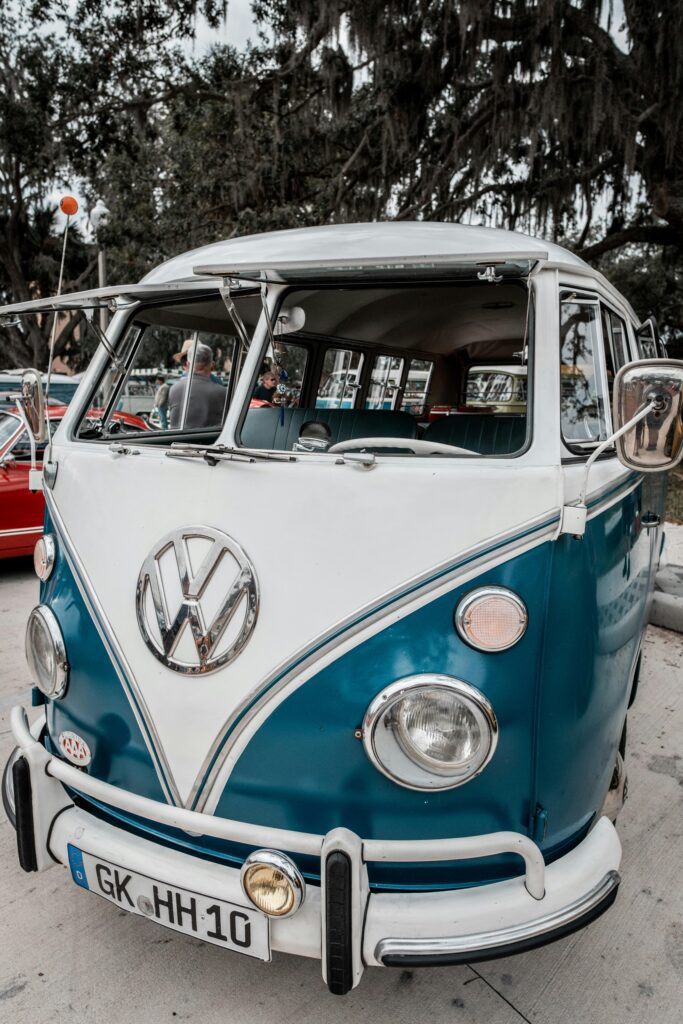
T2 (1967-1979): The Bay Window
While the T1 set the groundwork, the T2, also known as the “Bay Window” due to its larger, single-piece windscreen, brought improvements in both comfort and functionality. It became a mainstay of the 1960s and ’70s counterculture movement.
Engine: Started with a 1.6-litre flat-four engine, later upgraded to 2.0 litres, with power ranging between 47-70 horsepower.
Top speed: Now closer to 70 mph – a step up but still no racer.
Notable features: No split windscreen for a more modern look, redesigned suspension for better handling and comfort and the sliding side door became standard.
VW Bay Window fun facts
The T2 introduced an optional “pop-top” roof, giving campers extra headroom and sleeping space. A special “Berlin” conversion by Westfalia included a compact wardrobe, a sink and even a stove.
Despite being larger and heavier than the T1, the T2 maintained its charm and was often painted with psychedelic designs, embodying the spirit of freedom and adventure.

T25 / T3 (1979-1992): The Brick
The T25, also known as a T3, the “Vanagon” and various other nicknames, marked a clear period departure from the rounded, curvy design of its predecessors. Instead, it adopted a boxier, more angular look. It was larger, more refined and introduced water-cooled engines alongside the traditional air-cooled ones.
Engine: Early models used air-cooled 1.6-litre and 2.0-litre engines. Later switched to water-cooled 1.9-litre and 2.1-litre engines, outputting up to 112 horsepower.
Top speed: Around 80 mph – quite a leap for the series; but still sluggish in modern traffic.
Interior: Massive space for seating, sleeping, storage and improved insulation for better comfort in colder climates.
VW T3 fun facts
Optional 4-wheel drive models, dubbed Syncro, made the T3 a capable off-road camper. These skyrocketed in popularity among adventurers.
With its increased size, the T3 became a practical family camper and offered even more versatile conversions by companies like Westfalia.
T3s also appeared in plenty of 80s films and are still seen as retro-cool, perfect for modern-day “van life” enthusiasts who want a bit more space and comfort without compromising the retro look.
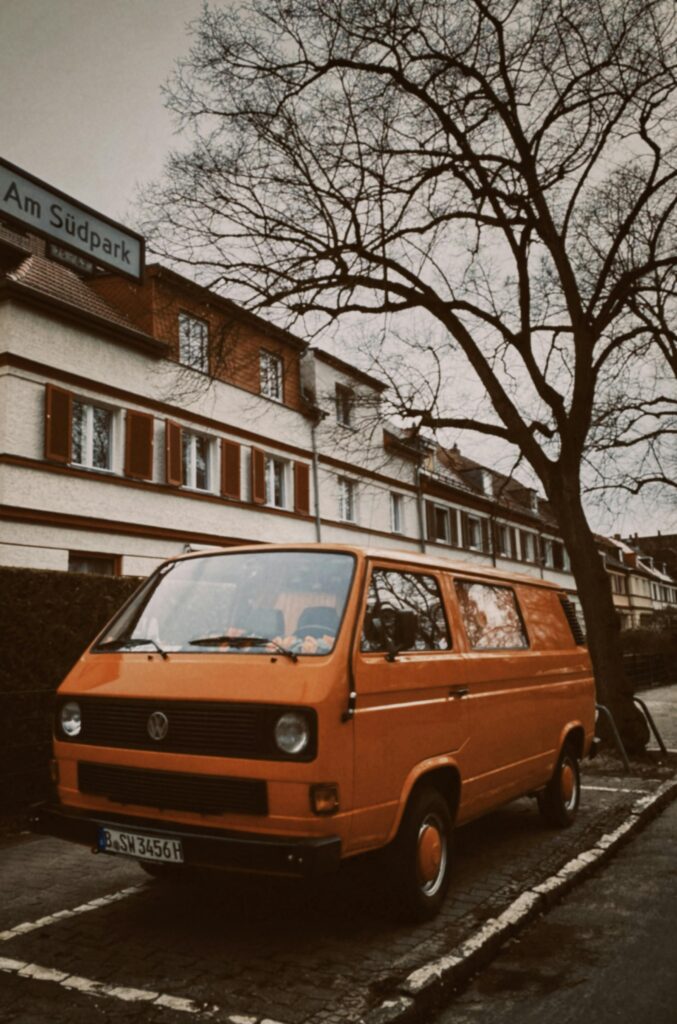
T4 (1990-2003): Entering the modern era
With the introduction of the T4, VW completely reworked its formula. The engine moved from the rear to the front, making it a front-engine, front-wheel-drive vehicle for the first time. This shift aligned with modern vehicle designs, offering better handling.
Engine options: Diesel engines (ranging from 1.9 litres to 2.5 litres) and petrol options up to a 2.8-litre VR6 engine delivering 204 horsepower.
Top speed: Up to 120 mph.
Modern features: Power steering and ABS became available and air conditioning was also offered for the first time.
VW T4 fun facts
The T4 marked the debut of the California model – Volkswagen’s in-house camper conversion, which continues to this day. The California remains the choice for those seeking the perfect blend of practicality, comfort, and VW’s camping expertise.
The T4 was a robust all-rounder, and many are still on UK roads today, proving its durability and enduring appeal.
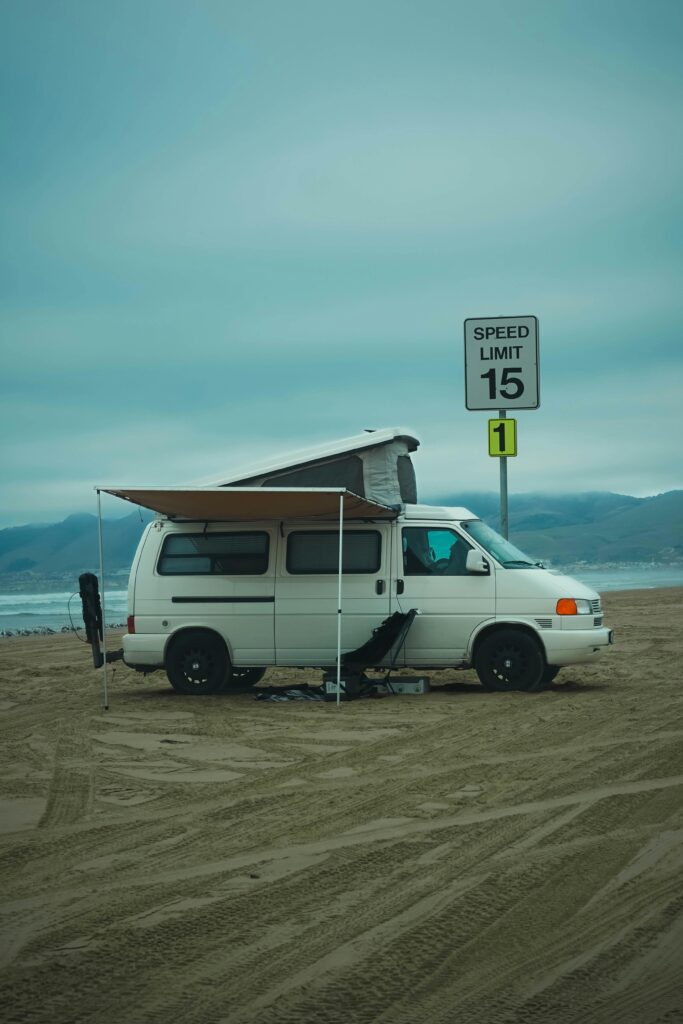
T5 (2003-2015): The refined traveller
The T5 built on its predecessor’s strengths, emerging as a smooth, reliable and powerful camper. It also offered higher-end finishes, making it popular among those looking for a premium travel experience.
Engine ranges: A mix of diesel options up to 2.5 litres, producing as much as 172 horsepower with optional turbocharged systems for improved performance.
Features: Full camper configurations with luxury trim options and improved stability for motorways and crosswind handling.
VW T5 fun facts
The T5’s popularity also led to an explosion of third-party conversions. Companies started offering bespoke interiors tailored to specific needs. If you’ve fancied having a camper with all the mod-cons, from solar panels to built-in media centres, the T5 is often the base vehicle of choice. We convert VW T5s into the camper of your dreams with modern facilities and electronics.
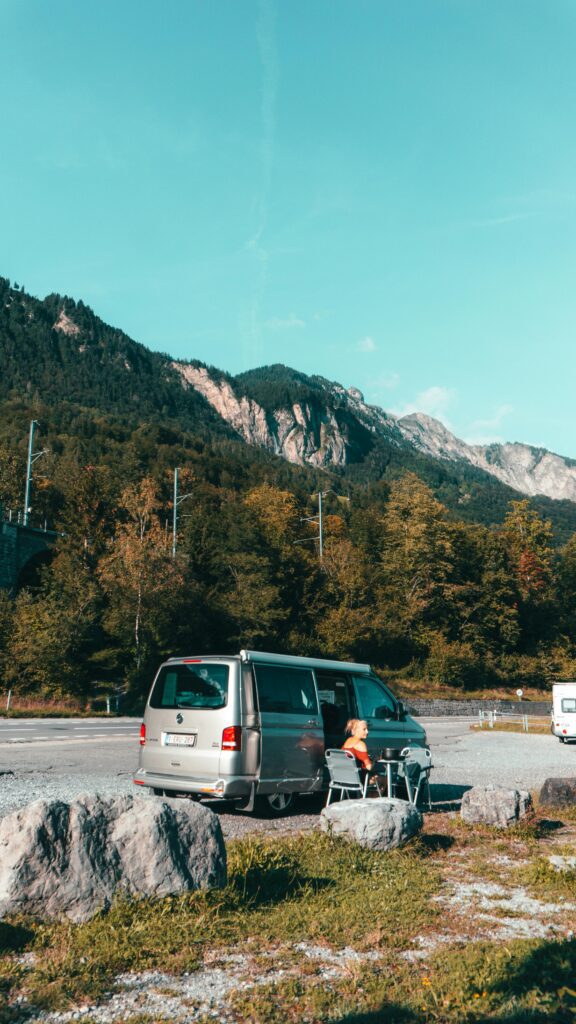
T6 and T6.1 (2015-Present): The contemporary camper
The T6 inherited the modern look of the T5, but with significant technology upgrades. The release of the T6.1 in 2019 brought even more advanced features, focusing on connectivity and driver-assist technologies.
Engine: Most models now use Euro 6-compliant 2.0-litre turbo diesel engines with outputs up to 204 horsepower.
Technology: Adaptive Cruise Control, Digital Cockpit, and touchscreen infotainment are standard and optional 4Motion (VW’s all wheel drive system) for tackling tougher terrains.
VW T6 fun facts
The California line has never been more advanced. With the Ocean model, for instance, you get features like an elevating roof, a built-in kitchen and even an auxiliary heater for those chilly British nights. These Californian campers are designed as all-in-one solutions for modern nomads.
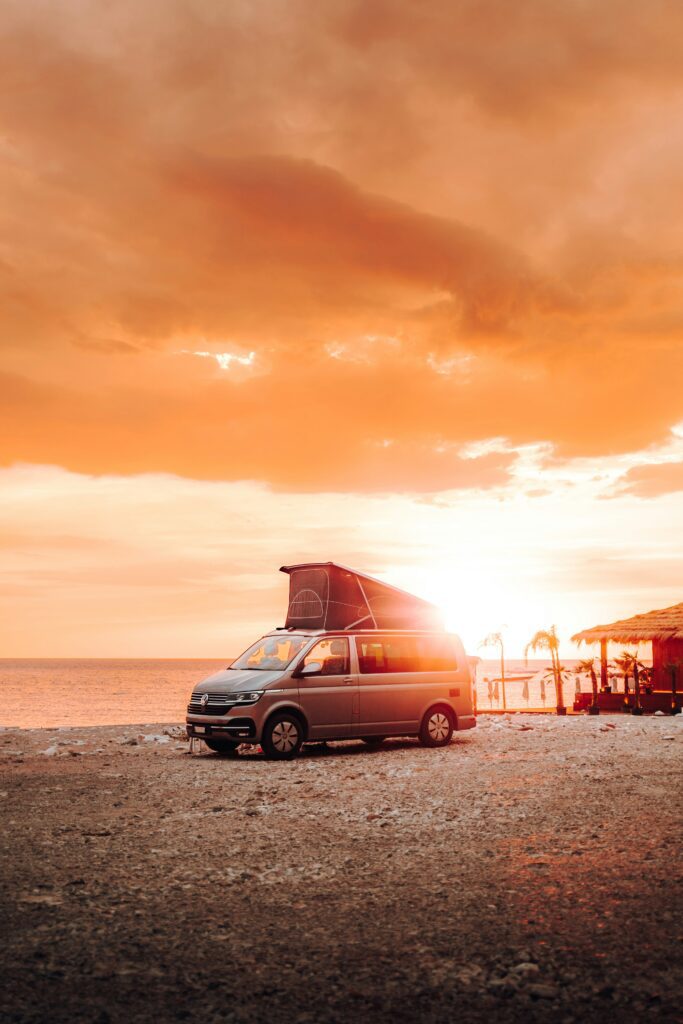
ID. Buzz (2024-Present): One for the future
Volkswagen has officially entered the all-electric era with the release of the ID. Buzz in August 2024. This modern marvel pays homage to the beloved T1 with its retro-inspired design, taking cues from the classic split-screen look while offering a fresh, futuristic twist. Powered by zero-emissions technology, the ID. Buzz is not just a nod to the past; it’s a leap towards a sustainable future.
With spacious interiors, cutting-edge connectivity and impressive electric performance, the ID. Buzz redefines what it means to travel in a VW camper. It’s a perfect blend of nostalgia and innovation, ensuring that the legendary spirit of freedom and adventure continues for generations to come. Volkswagen has once again proven that the campervan legacy is alive and thriving in this new, greener world.
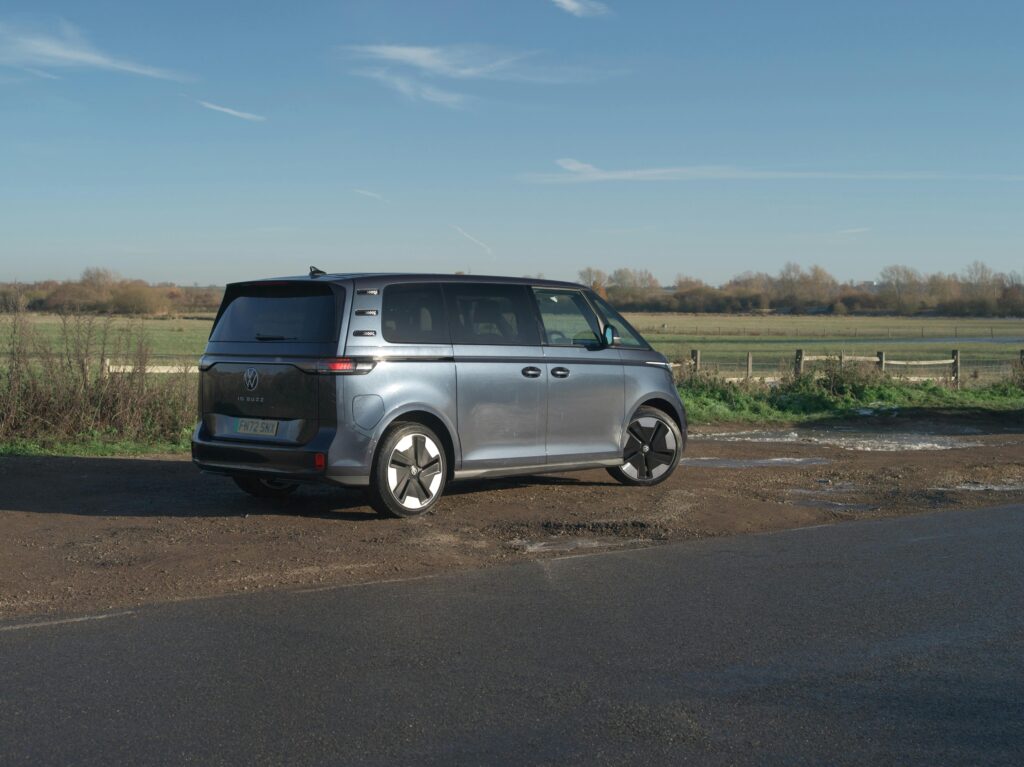
Our round-up
From the humble yet ground-breaking T1 to the futuristic ID. Buzz, Volkswagen campervans have proven to be more than just vehicles, they’re symbols of freedom, adventure and nostalgia. Whether you’re a collector eyeing up a Splitty or someone planning their next road trip in the impressive new ID. Buzz, there’s a VW campervan for every kind of taste.
Discover a camper that matches your taste here.
Looking for a converted camper? View our range here.
